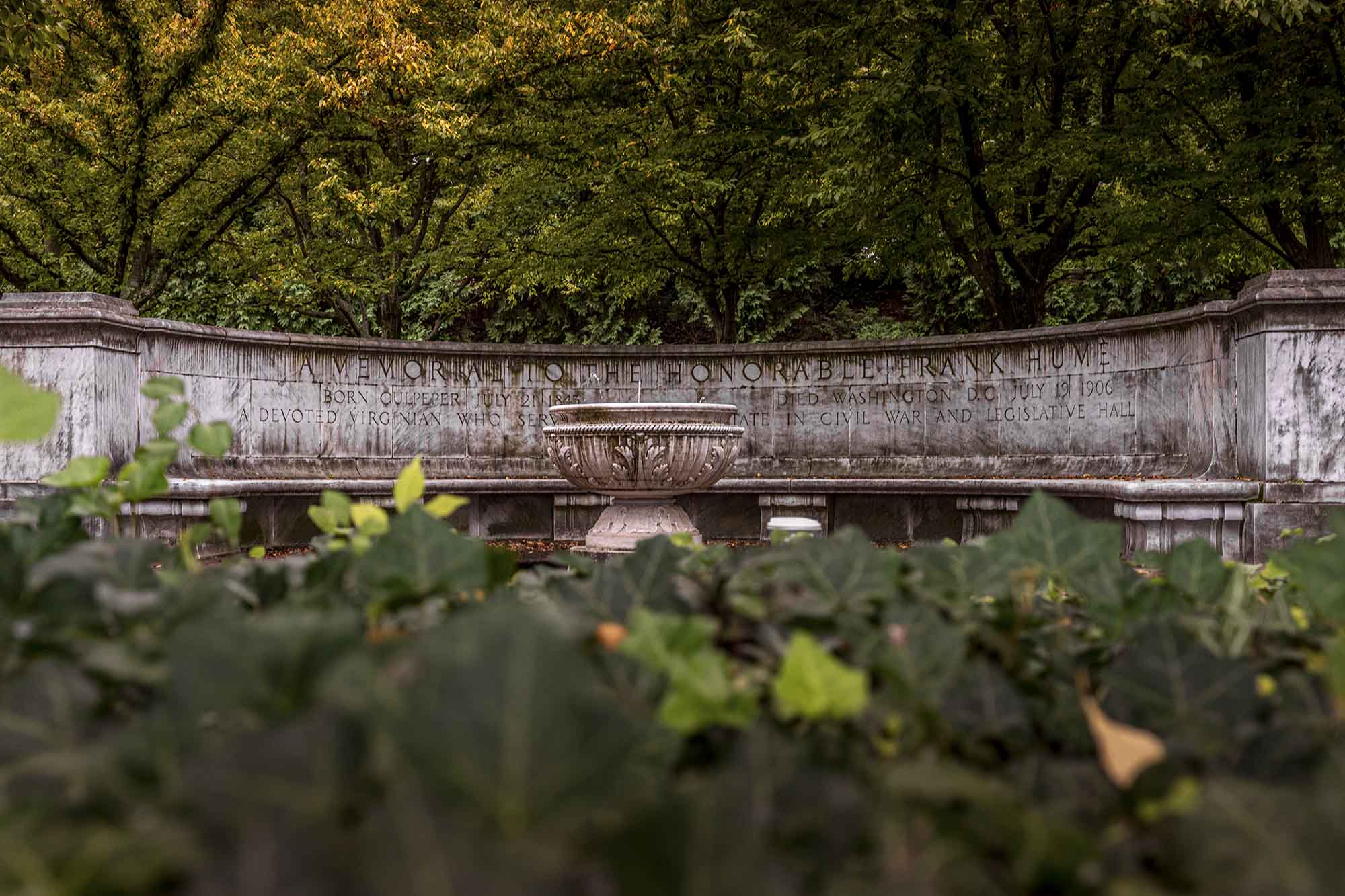The University of Virginia Board of Visitors on Friday approved a resolution to make modifications to the “Whispering Wall” memorial, and heard an update on the George Rogers Clark statue, which will be removed from its current location this summer.
Based on the recommendation of the University’s Naming and Memorials Committee, the inscription on the Whispering Wall, originally named after Confederate soldier and Virginia politician Frank Hume, will be removed and replaced with blocks of a contrasting color to mark the change. It will also be officially designated as the Whispering Wall, which has served as its unofficial name for years.
In addition, the resolution calls for the history of the wall to be included as part of the ongoing digital contextualization of statues and memorials across Grounds.
The matter was referred to the Naming and Memorials Committee by the Board of Visitors in September of 2020 following a recommendation from the University’s Racial Equity Task Force that rededication, if possible, or removal of the memorial be explored.










